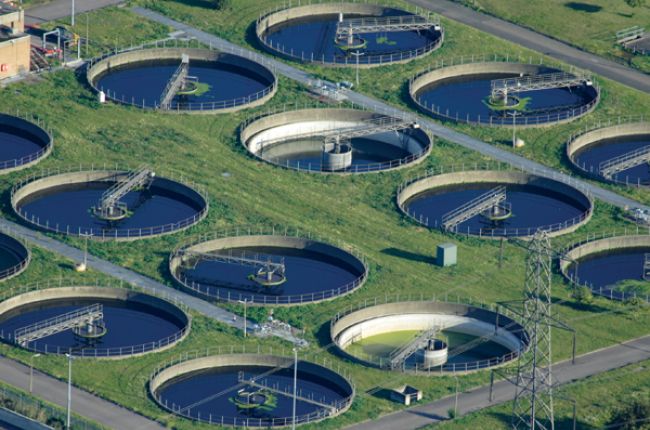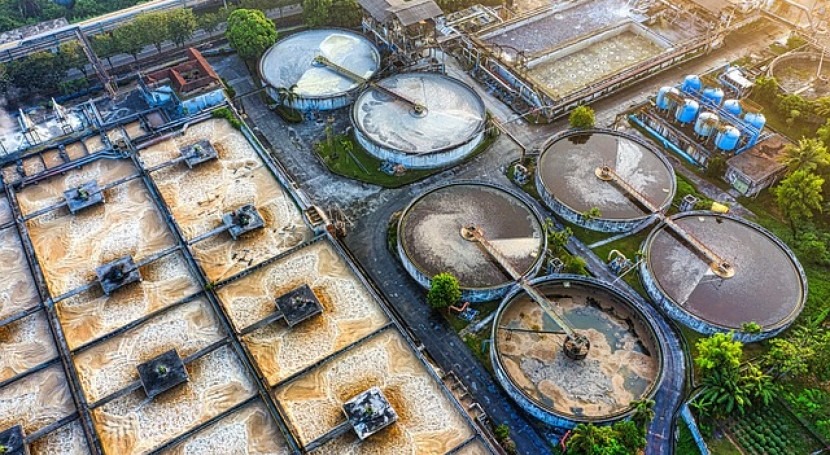Environmental Effect of Waste Water Treatment: What You Required to Know
Strategic Approaches to Improve Drainage Treatment Performance and Minimize Environmental Effect
In the world of drainage treatment, the mission for improved performance and lowered environmental effect is a continuous obstacle that requires calculated remedies. As society grapples with the imperative to manage water resources sustainably, a nuanced approach becomes vital. The assimilation of innovative treatment technologies, energy-efficient procedures, resource recovery approaches, enhanced nutrient removal methods, and wise tracking and control systems stands for a complex structure for addressing these pushing problems. What exists at the core of this complex internet of methods is the prospective to transform the way we approach waste water treatment, not simply as a process of disposal, but as a beneficial possibility for technology and ecological stewardship.
Advanced Therapy Technologies
Sophisticated membrane filtering systems have reinvented sophisticated wastewater treatment procedures, considerably boosting the removal of pollutants. These innovative systems function forcibly water via a semi-permeable membrane, successfully separating pollutants from the water stream. The membrane layer's microscopic pores trap contaminants such as microorganisms, viruses, and suspended solids, enabling just detoxified water to go through. This modern technology has shown to be very reliable in removing a vast array of impurities, consisting of pharmaceuticals, heavy steels, and organic compounds, which are often testing to remove through typical therapy methods.
Furthermore, membrane layer filtration systems provide numerous benefits over traditional therapy techniques. They call for less space, produce higher-quality effluent, and are extra immune to variations in influent water top quality. Furthermore, these systems are extremely versatile and can be conveniently incorporated into existing treatment plants or made use of as standalone devices for decentralized applications. As the demand for clean water remains to climb, the fostering of sophisticated membrane purification modern technologies is important to ensure lasting and reliable wastewater therapy techniques.
Energy-Efficient Processes
The integration of energy-efficient procedures in wastewater therapy systems is critical for enhancing source use and decreasing functional expenses. By applying energy-efficient innovations, therapy plants can substantially lower their carbon impact and overall ecological effect. One vital method to enhancing energy performance in wastewater treatment is the utilization of innovative aeration systems, such as great bubble diffusers or surface aerators, which can boost oxygen transfer performance and minimize power usage. Furthermore, incorporating energy recovery systems, like anaerobic food digestion for biogas manufacturing or utilizing excess warm for thermal procedures, can aid balance out energy needs and promote sustainability.
Additionally, maximizing process control and automation via the usage of innovative sensing units and checking systems can boost total energy effectiveness by changing operations in real-time based on real need and problems. Implementing energy audits and regularly checking power performance indicators are vital practices to determine areas for renovation and track energy-saving campaigns successfully. In general, the adoption of energy-efficient procedures in wastewater treatment not just profits the atmosphere yet likewise adds to lasting expense financial savings and functional sustainability.
Source Recovery Methods
With a concentrate on enhancing resource application and sustainability in wastewater therapy systems, the implementation of source recovery strategies arises as an essential aspect in boosting functional effectiveness. Source recovery techniques in wastewater therapy involve the recognition and removal of useful resources from the waste stream, have a peek at this website thus transforming what was once taken into consideration waste right into a beneficial possession. By executing resource recuperation methods such as nutrient removal and recuperation, power generation from raw material, and the production of reusable water, wastewater therapy plants can reduce ecological effect while making best use of efficiency.

Boosted Nutrient Elimination Methods
Implementing sophisticated nutrient removal methods is vital for see post optimizing the effectiveness of wastewater therapy systems. One of the crucial strategies used for improved nutrient elimination is the procedure of biological nutrient removal (BNR), which includes the elimination of nitrogen and phosphorus through organic procedures.

In addition to BNR, progressed treatment approaches such as membrane bioreactors (MBRs) and created marshes can also be employed to boost nutrient removal effectiveness. By incorporating these sophisticated nutrient elimination strategies right into wastewater treatment systems, districts and industries can properly minimize nutrient air pollution and safeguard the setting.
Smart Surveillance and Control Equipment
Making use of cutting-edge technology, the assimilation of smart surveillance and control systems transforms the operational effectiveness of wastewater therapy facilities. These systems include innovative sensors and information analytics to continuously keep an eye on essential criteria such as pH degrees, turbidity, liquified oxygen, and flow prices in real-time. By collecting and examining this information, drivers can obtain important understandings into the performance of the therapy processes, making it possible for positive modifications to maximize therapy effectiveness.
Smart surveillance and control systems also support remote tracking capabilities, enabling operators to accessibility real-time information and control functions from off-site locations. This remote accessibility enhances operational flexibility and responsiveness, enabling swift interventions in instance of system malfunctions or variations in influent quality. In addition, the predictive maintenance capabilities of these systems aid avoid tools failures and minimize downtime, eventually enhancing the total integrity of wastewater treatment procedures (Waste Water Treatment).
Conclusion
Finally, critical methods such as advanced therapy technologies, energy-efficient processes, resource healing strategies, enhanced nutrient removal techniques, and clever monitoring and control systems play a imp source crucial role in improving wastewater treatment efficiency and reducing environmental effect. By carrying out these techniques, wastewater treatment plants can boost their total efficiency, minimize energy consumption, recover beneficial resources, and ensure conformity with ecological laws. These methods are necessary for sustainable and reliable wastewater monitoring practices.

In verdict, tactical strategies such as sophisticated therapy innovations, energy-efficient processes, source healing methods, boosted nutrient removal techniques, and wise tracking and control systems play an essential duty in enhancing wastewater treatment performance and decreasing environmental impact.